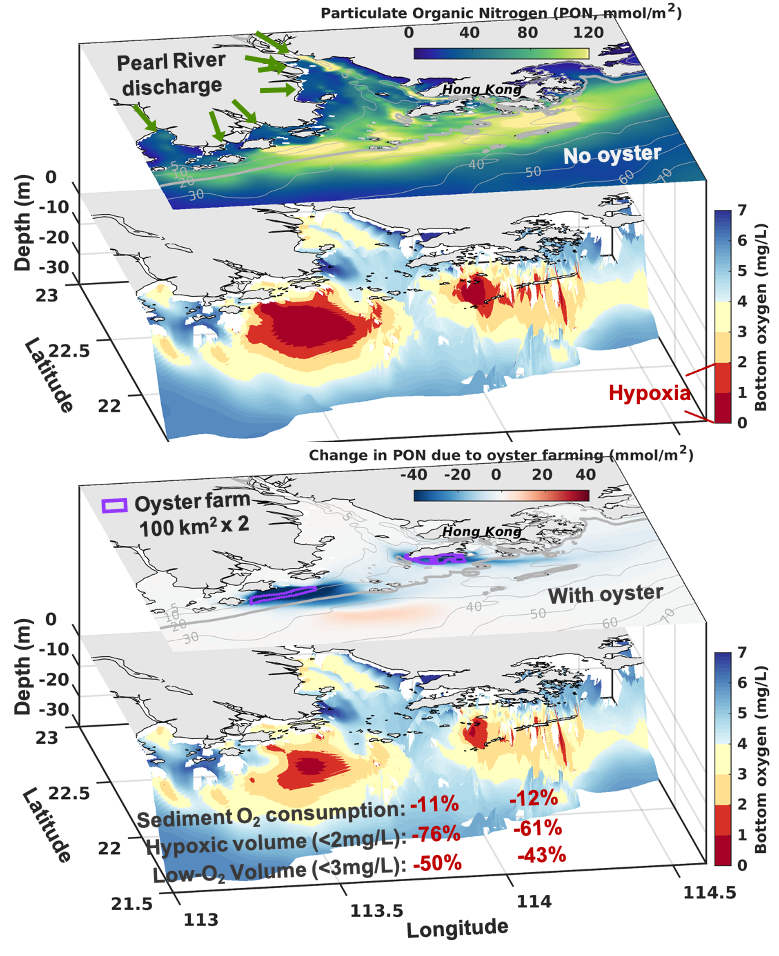Research Themes
Biogeochemical modelling to understand human impacts on marine ecosystems
Biogeochemical ocean models that couple physical, chemical, and biological processes are invaluable tools for ocean research and management. We use a variety of regional-scale 3D biogeochemical models to understand and predict pressing environmental issues, such as eutrophication, hypoxia (i.e., dissolved oxygen concentration < 2 mg/L), and oil spill events. By developing and validating models of various configurations and levels of complexity, we address questions like 1) what are the primary physical and biogeochemical processes controlling coastal oxygen dynamics and hypoxia? 2) how complicated the oxygen model is needed to skilfully simulate the hypoxic conditions, e.g., a simple oxygen model based on observations-derived empirical relationships versus a full biogeochemical model? 3) what is the role of river-delivered terrestrial organic matter in hypoxia formation? and 4) how much and how fast have the unprecedented amount of deep-water hydrocarbon plumes released from the 2010 Gulf of Mexico oil spill been degraded by microbes? Our research on these questions provides useful information for understanding and management of diverse ecosystems.
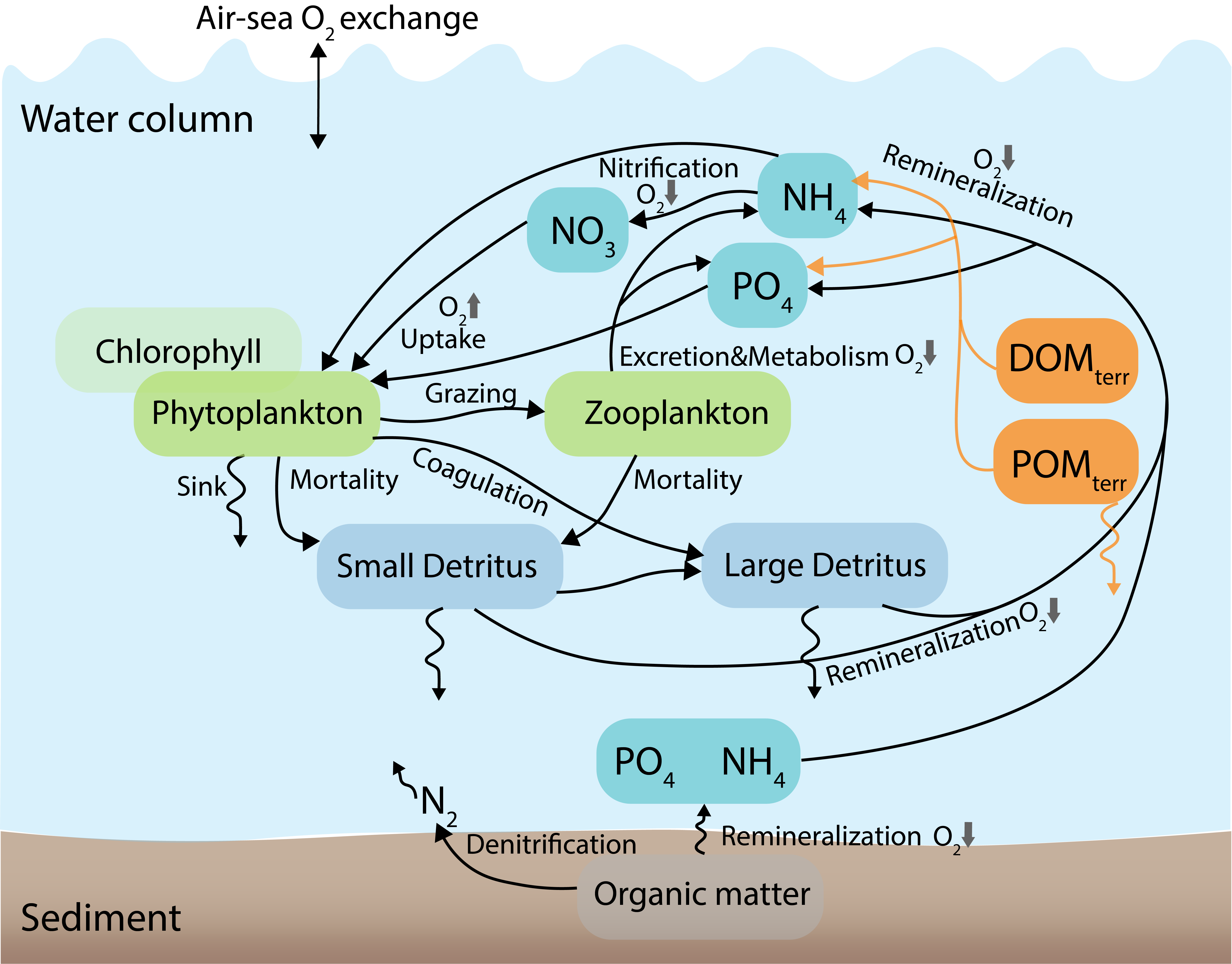
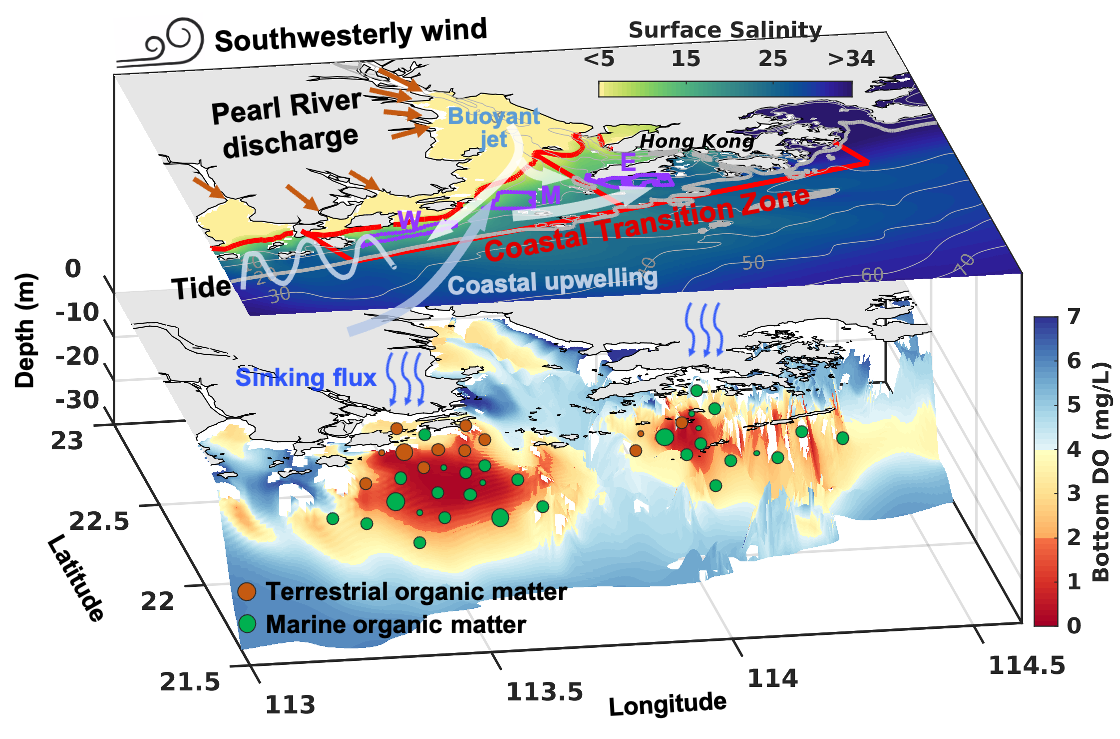
Applying data assimilation technique to improve model estimation and optimize observing system design
While biogeochemical models are invaluable tools for ocean research, they offer an imperfect representation of the true ocean because they are limited by various sources of error resulting from imperfect descriptions of physical and biological processes, inaccurate forcing, uncertain initial and boundary conditions, and imprecise parameter values. Data assimilation methods that merge the information contained in observations and dynamical models can provide a more accurate representation of marine physical and biogeochemical processes. Our work involves implementing and exploring a multivariate data assimilation method, the Ensemble Kalman Filter (EnKF), to improve both physical and biogeochemical ocean model fields. We have also implemented the method to a Gulf of Mexico hydrocarbon model where the assimilation significantly improves the simulated mesoscale circulation and the movement of deep-water hydrocarbon plumes.
Implementation of data assimilation technique in twin experiment framework is used for observing system simulation experiments (OSSEs) that evaluate the impact of different ocean observing system designs on model predictive skill. By conducting OSSEs using the data-assimilative model developed for the Gulf of Mexico, we show that the observations sampling strategy adopted during the Gulf of Mexico oil spill in 2010 was inefficient to track the movement of hydrocarbon plumes and we propose an optimized observing system that could more accurately estimate the plume movement and hydrocarbon biodegradation.
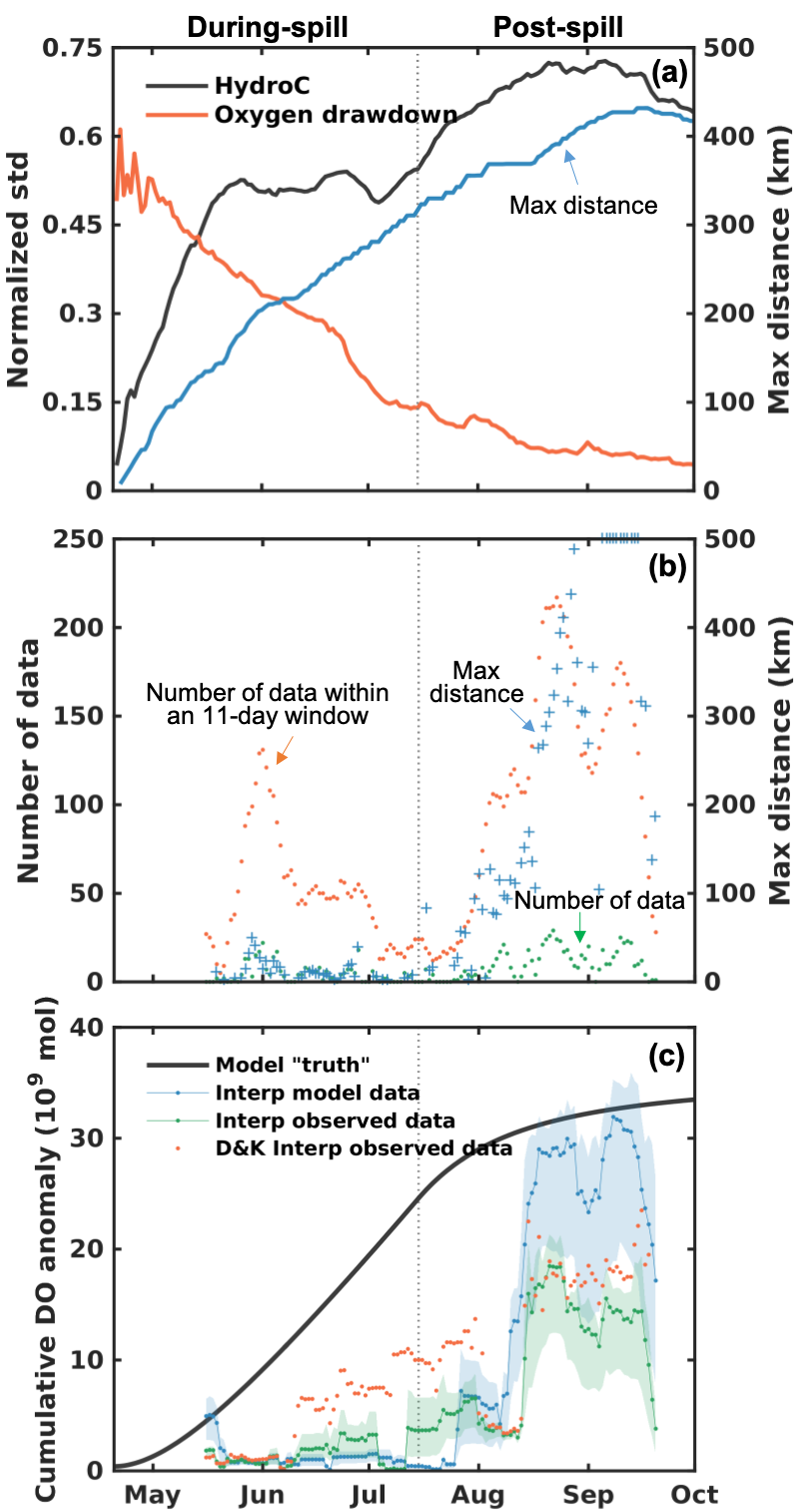
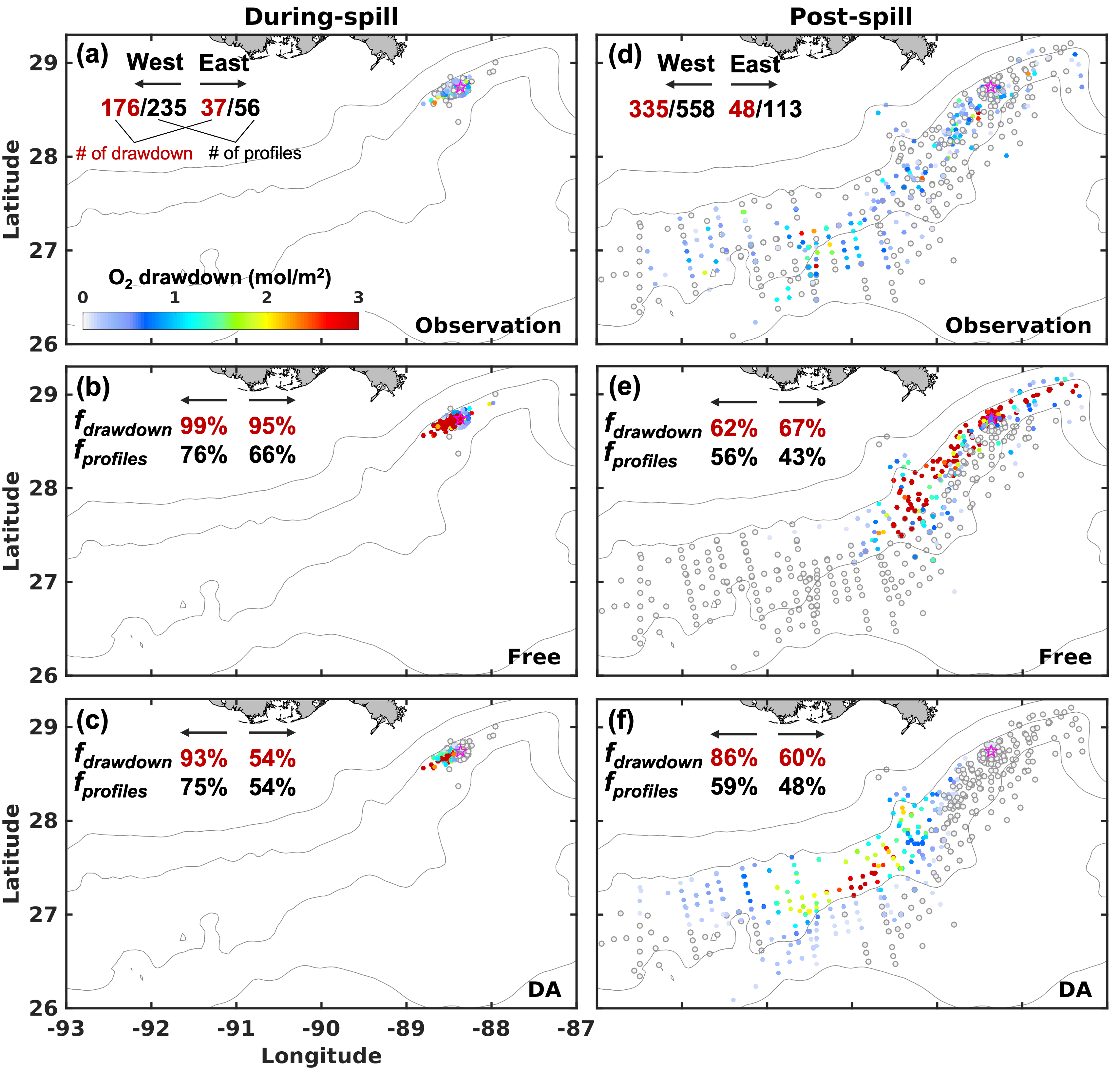
Exploring eco-engineering approaches to mitigate human-caused environmental problems
Eutrophication-driven hypoxia is among the most serious threats to aquatic ecosystems worldwide, calling for strategical mitigation efforts. Our work also aims at providing a theoretical basis supporting such efforts. Among the various management options to reduce eutrophication, shellfish aquaculture has been considered a promising eco-engineering approach, because the filter-feeding activities of shellfish naturally remove the nutrients contained in plankton and particulate organic matter. To investigate the effectiveness and underlying ecosystem dynamics of shellfish aquaculture on alleviating eutrophication and hypoxia under complex hydrodynamical-biogeochemical conditions, our recent work has extended the physical-biogeochemical model of Pearl River Estuary to include an oyster aquaculture module. The work highlights the prospect of incorporating shellfish aquaculture as a eutrophication and hypoxia management tool. It also demonstrates that the effectiveness of oyster aquaculture on hypoxia mitigation hinges on the farming location, areal size, and oyster cultivation density, all of which must be considered along with the circulation and biogeochemical characteristics of the ecosystem.
